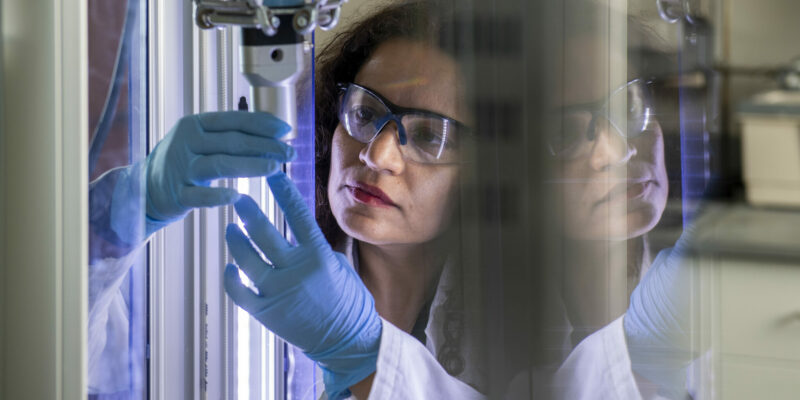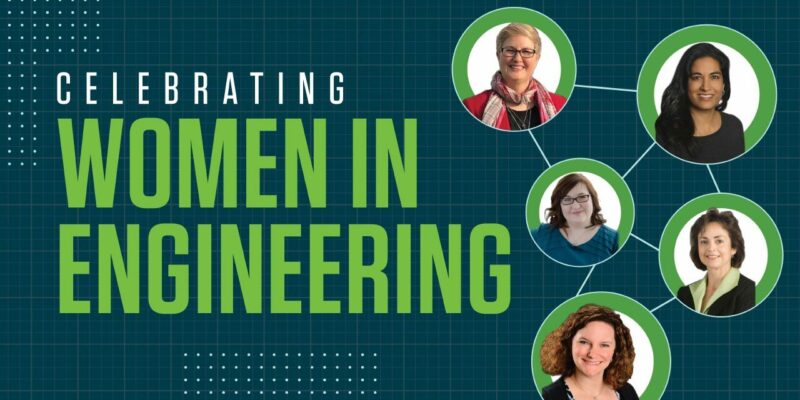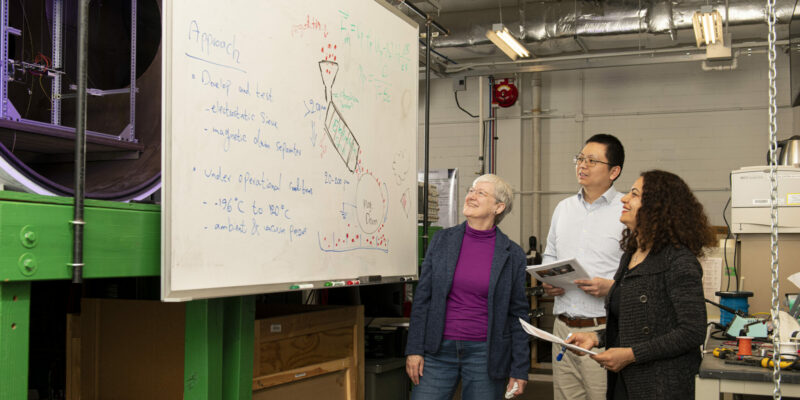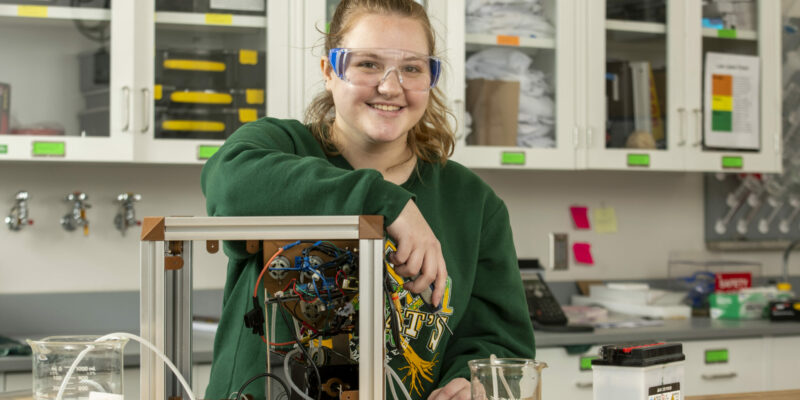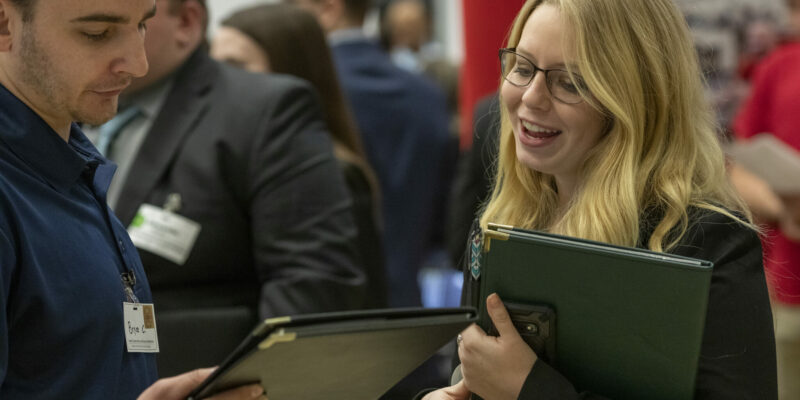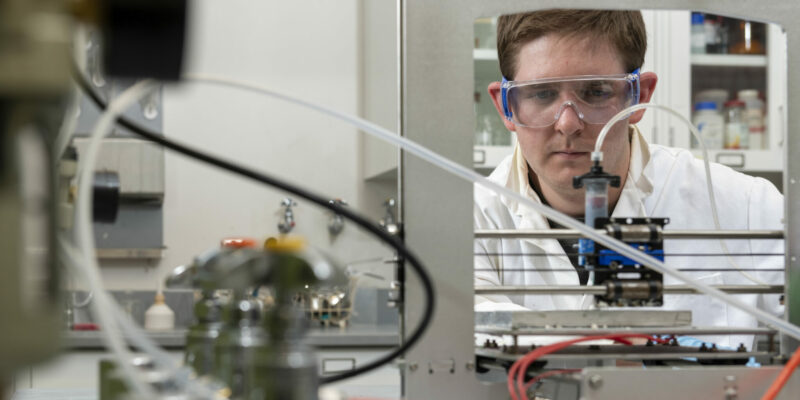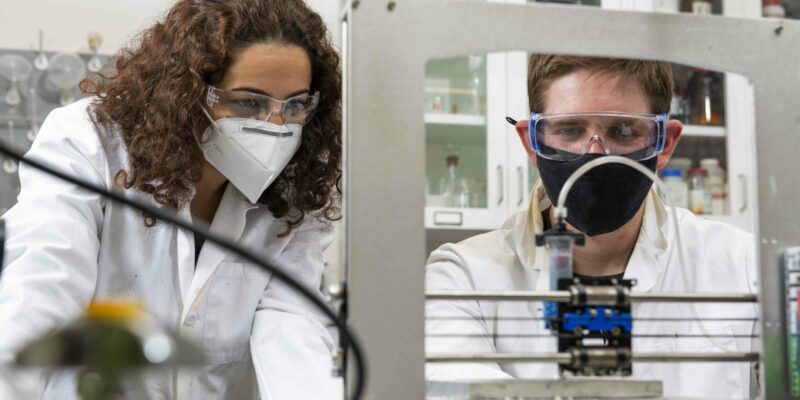Tag: chemical and biochemical engineering
Carbon-capture research wins $1.7 million grant
Researchers at Missouri S&T will develop a system to capture carbon dioxide and use it for blended cement, ultimately contributing to the decarbonization of the cement industry. The National Science Foundation awarded a $1.7 million grant for the project.
Read More »Saluting S&T engineering alumnae
March 8 is International Women’s Day, a time to appreciate the contributions of women and girls around the world. We salute Missouri S&T alumnae for the difference they continue to make in Rolla and for their influence in their professions and communities. Here are a few of the thousands of women we’re proud to call S&T graduates.
Read More »NASA selects S&T for lunar-living project
Researchers at Missouri S&T will develop mineral extraction techniques for lunar construction as part of a NASA project to make it possible for people to live and work on the moon. NASA will provide up to $2 million over two years to support S&T’s research.
Read More »Keeping calm and carrying on
Imagine being one of a handful of teams invited to take part in a first-ever national competition only to have your entry lost in the matrix of a shipping system. What to do? In the case of Missouri S&T’s Chem-E Cube team, they carried on in the face of adversity and won an award for their efforts.
Read More »Missouri S&T researchers work to extract pollutants from water
t is an uphill battle to extract pollutants such as heavy metals, hydrocarbons, and radioactive metals from industrial waste and water run-off. Researchers typically focus on cleaning and purifying wastewater to prevent those pollutants from entering the environment and damaging ecosystems. But a team of researchers from Missouri S&T have devised a way to not only clean up heavy metals from the wastewater, but also facilitate recycling the chemicals used and reusing the metals that are extracted.
Read More »S&T alumni mentor students to help future careers
Engineering graduates enter the workforce with essential academic knowledge, technical skills and problem-solving ability. But employers say they need more than academic prowess and technical know-how. Soft skills like effective communications, leadership, networking, negotiating, conflict resolution and cultural aptitude play a critical role in employees’ success. Students at Missouri S&T are getting help in those areas from alumni mentors through a program housed in the Doshi Department of Chemical and Biochemical Engineering (ChBE).
Read More »College of Engineering and Computing honors graduate students
Thirteen Ph.D. students at Missouri University of Science and Technology received dean’s honors from the College of Engineering and Computing (CEC) during a hybrid on-campus/online ceremony today (Tuesday, May 25).
Read More »Missouri S&T graduate engineering programs on the rise in U.S. News & World Report rankings
Missouri S&T is again one of the nation’s top-ranked institutions for pursuing a graduate degree in engineering, and several specific degree programs are on the rise, according to the latest U.S. News & World Report rankings.
Read More »New cellular treatment could cure chronic artery disease
A new, cellular-level approach to removing plaque build-up in the arteries could eventually lead to a cure for the chronic disease known as atherosclerosis, according to a researcher at Missouri S&T. The method uses nanoparticles that can be designed to deliver plaque-busting drugs to specific cells in arteries. The nanoparticles have an average diameter of 150 nanometers, about 1/500th the diameter of a human hair.
Read More »Research promotes ‘doubly green’ renewable energy captured from biowaste
Cities around the United States could use their own biowaste from food scraps or manure to produce renewable energy for vehicles, according to a researcher at Missouri S&T. The proposed operation uses renewable natural gas (RNG) from biowaste and renewable hydrogen (RH2) from surplus electricity generated by solar or wind energy as a vehicle fuel for onboard transportation.
Read More »